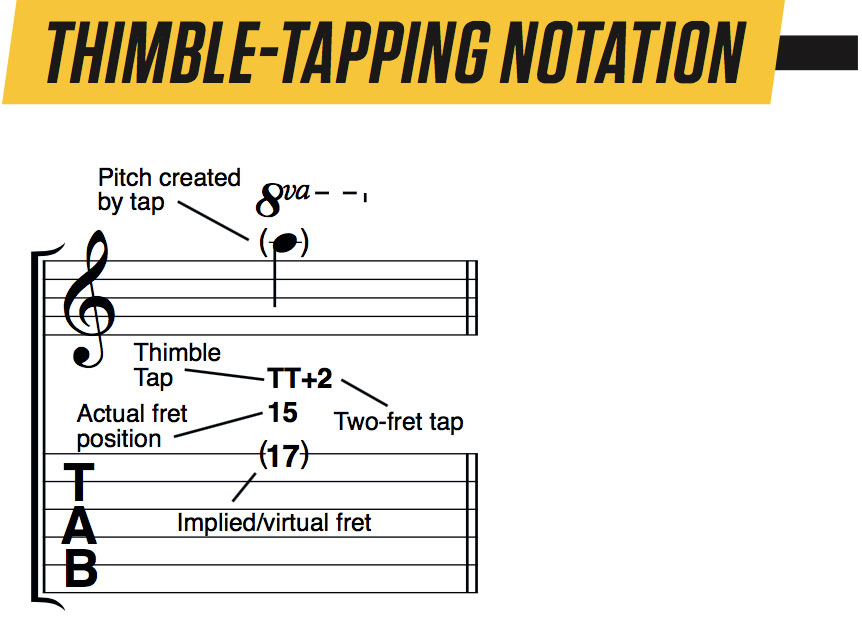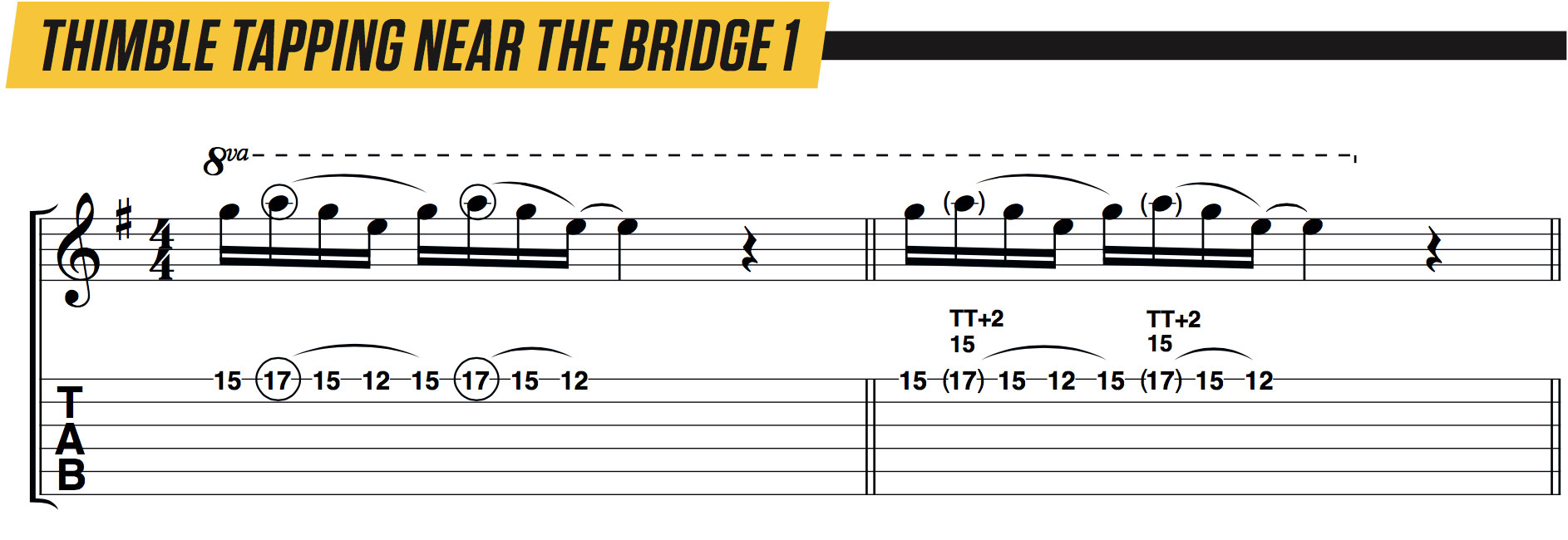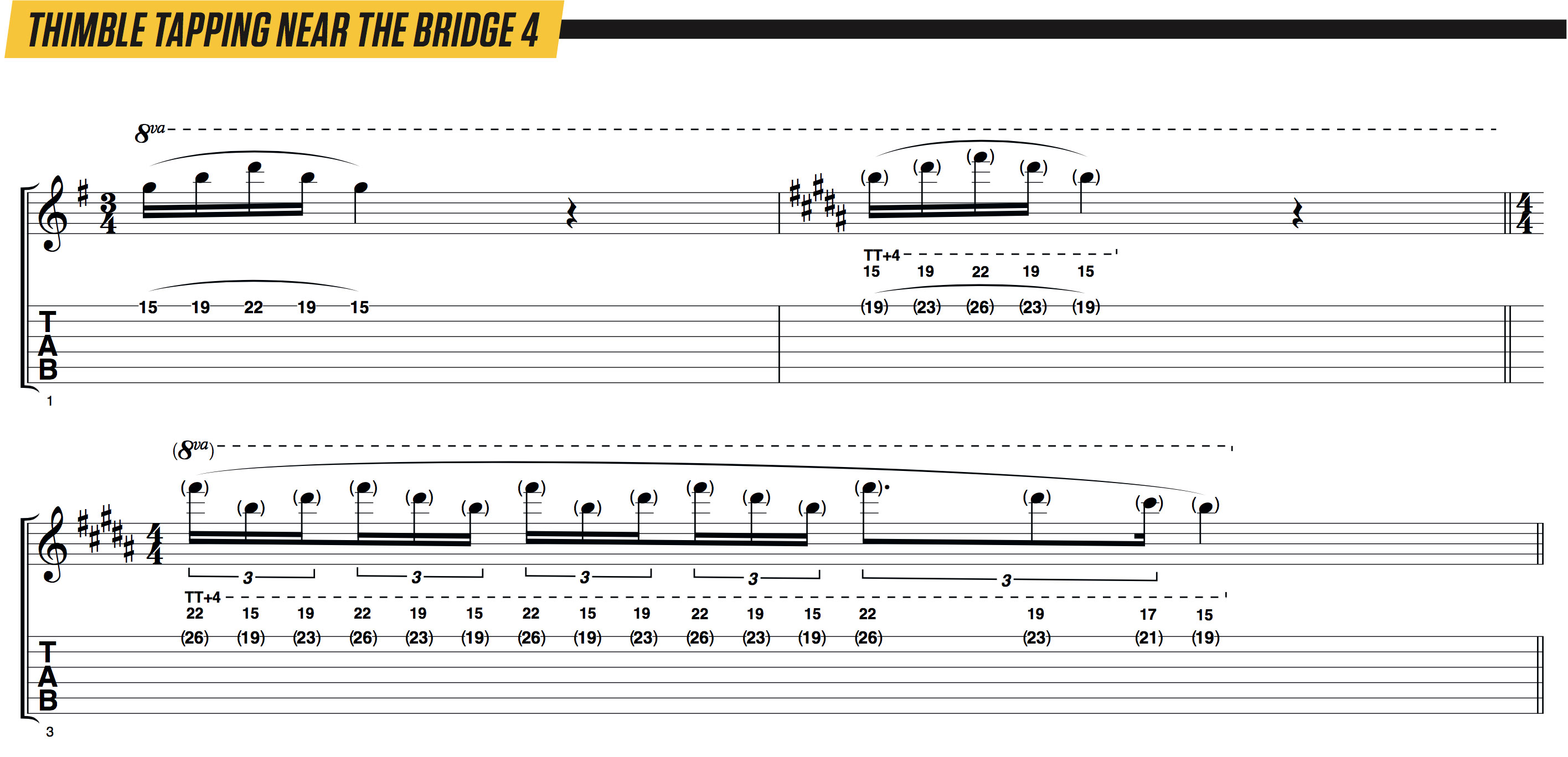30-day guitar challenge, day 30: Bumblefoot guitar lesson: thimble-tapping, scales and harmonics
Clever technique from the ex-GN'R guitar-slinger

30-day guitar challenge: For your final lesson, Bumblefoot takes you through his weird and wonderful approach to creativity and technique, complete with thimble...
"Ron's guitar style is uniquely creative, always delivered with jaw-dropping technical skill"
Bumblefoot (aka Ron Thal) is best known as guitarist for Guns N' Roses up until this year, and, as a solo performer, he has 10 releases under his belt. Ron's guitar style is uniquely creative, always delivered with jaw-dropping technical skill. Ron's lesson begins with some scale exercises with a difference.
The goal is to train your brain to work in a slightly different way: to practise without thinking, so your unconscious mind controls your hands. Next, Ron talks about dividing the string into different lengths using harmonics. the idea is to think in terms of changing the length of the string rather than relying on the frets.
This leads on to Ron's unique thimble tapping technique, which is his way of extending the range of the guitar beyond the confines of the fretboard and opening up the entire length of the strings, right up to the bridge.
Any metal sewing thimble would suffice. At first, this technique will take guesswork, but, with practice, you will begin to learn where these notes are.
C major scale

Repeat this C major scale (C D E F G A B) until you can play it automatically. Play short phrases if the shape is new to you. Ron recommends not looking at your guitar and simply letting it happen without conscious thought. Free your mind!
C major scale tab (right-click to download)
Get the MusicRadar Newsletter
Want all the hottest music and gear news, reviews, deals, features and more, direct to your inbox? Sign up here.
A major scale

Just like example 1, repeat this A major scale shape (A B C# D E F# G#) until it becomes automatic and this time, try occupying your mind with something else, such as reciting the alphabet, or, as Ron suggests, sing it in a different key... This is fiendishly tough!
This F major scale shape (F G A B b C D E) alternates between four- and three-note-per-string shapes. Play the scale in triplets and accent the downbeat with a louder pick attack and play the two notes in between as quietly as you can; count out loud: '1 & a 2 & a 3 & a 4 & a' to keep time.
A major scale tab (right-click to download)
Triplets with accents 1

Once again we're continuing to use all four fingers for the four-note-per-string phrases and your first, second and third fingers for the three-note-per-string parts. This time, accent the second note of each triplet, so the '&'s are the loudest notes as you count '1 & a 2 & a 3 & a 4 & a'.
Triplets with accents 1 tab (right-click to download)
Triplets with accents 2

As with the previous examples, continue to play up and down the F major scale using relaxed, controlled alternate picking.
Tap your foot on beats 1, 2, 3 and 4 and this time accent the third note of each triplet; the 'a's in the '1 & a 2 & a 3 & a 4 & a'count.
Triplets with accents 2 tab (right-click to download)
Dividing the string with harmonics

In this interesting example, Ron shows that dividing a string into equal lengths always yields the same harmonic pitches.
This is most obvious in bar 3, where you'll see that the 7th and 19th fret harmonics sound the same because they appear at one third and two thirds of the length of the string.
Dividing the string with harmonics tab (right-click to download)
Thimble tapping near the neck

Place a thimble on the fourth finger of your pick hand, select your bridge pickup, then play the 15th-fret G note.
Judge where the halfway point between your fretting finger and the bridge is and tap with your thimble. Finally, try the lick in bar 2: the thimble lets you produce notes beyond your highest fret.
Thimble tapping near the neck tab (right-click to download)
Thimble-tapping notation

Ron's technique is pretty whacky and the tab is equally unusual. Here's how we've notated bridge-position thimble tapping.
Thimble-tapping notation tab (right-click to download)
Thimble tapping near the bridge 1

Bar 1 shows traditional tapping; play the 12th and 15th frets with your fret hand and tap the 17th fret with your pick hand.
Bar 2 shows the Bumblefoot method: use the thimble to add a tone above the 15th fret by tapping the equivalent of two frets space near the bridge. Select the neck pickup for this to work properly.
Thimble tapping near the bridge 1 tab (right-click to download)
Thimble tapping near the bridge 2

Start this lick by selecting a neck pickup and thimble tapping near the bridge while simultaneously holding hold the 17th fret with your fretting hand.
If you're in the right spot, you should hear a B note. If you're not sure what that should sound like, try playing bar 2 using traditional tapping.
Thimble tapping near the bridge 2 tab (right-click to download)
Thimble tapping near the bridge 3

This is a two-string variation on the previous example. This time, move the thimble back and forth to change the pitch by a semitone.
Perform the string change with a fret-hand tap (shown in squares) at the 15th fret. Check your accuracy by comparing the thimble tapping version to the traditional tapping version in bar 2.
Thimble tapping near the bridge 3 tab (right-click to download)
Thimble tapping near the bridge 4

In this final example, Ron shows how you can pitch-shift an entire group of notes with a combination of thimble tapping and fret-hand legato.
Bar 1 shows the notes at their normal pitch; for the second and third bars, play exactly the same frets, but apply the thimble near the bridge to add four semitones.
Thimble tapping near the bridge 4 tab (right-click to download)
Total Guitar is Europe's best-selling guitar magazine.
Every month we feature interviews with the biggest names and hottest new acts in guitar land, plus Guest Lessons from the stars.
Finally, our Rocked & Rated section is the place to go for reviews, round-ups and help setting up your guitars and gear.
Subscribe: http://bit.ly/totalguitar










